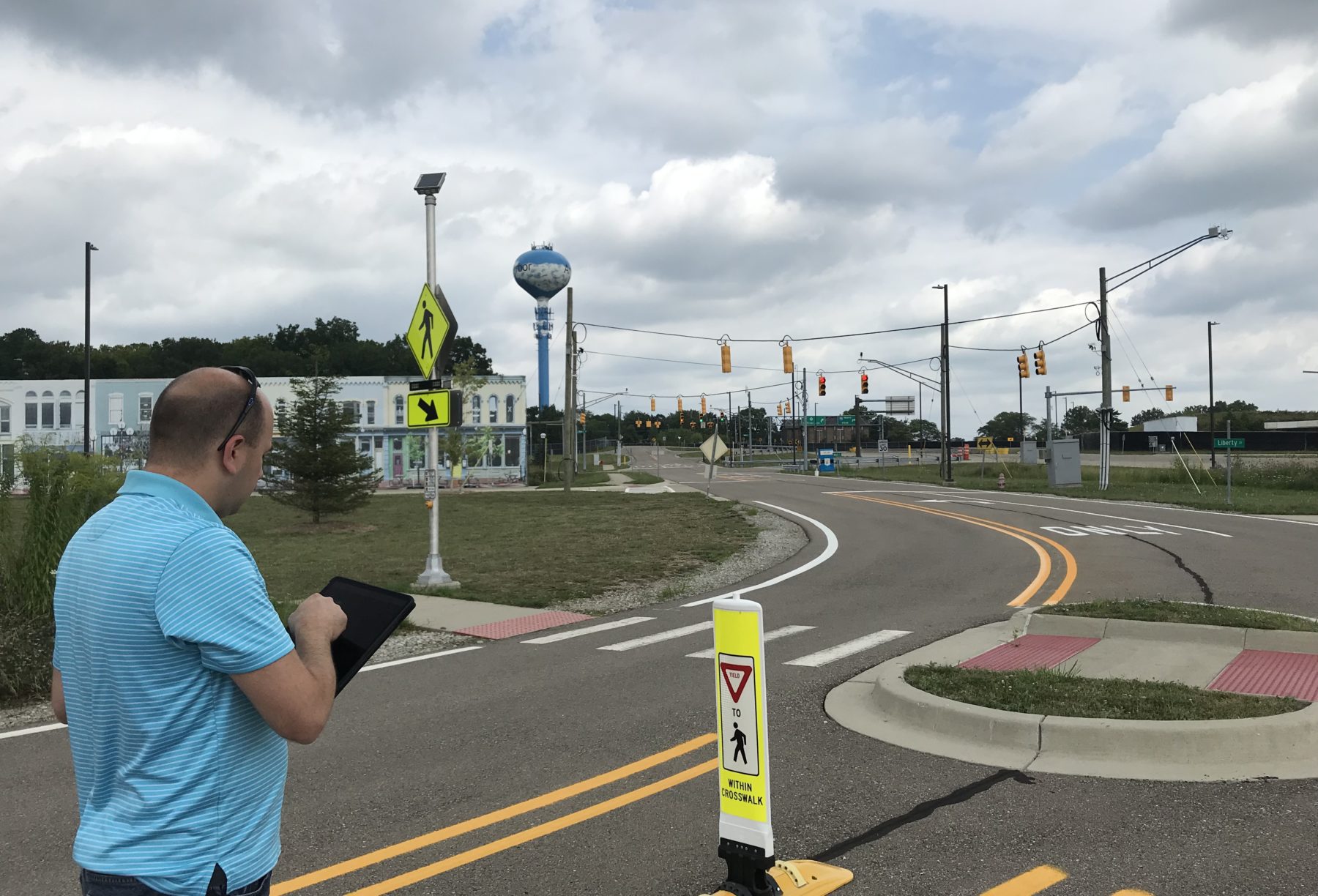New Software Allows Users to Control Mcity Test Facility

Mcity’s new software interface, OCTANE, allows users to control many aspects of the Mcity Test Facility’s infrastructure from a phone, laptop or vehicle computing platform. The application programmable interface (API) is a common language other applications and users can access to interact with the facility.
Mcity has also built a web application, called Skyline, using the OCTANE API to enable point-and-click control for test facility features, including roadway intersections, rail crossings, crosswalks, and facility gates. These new scriptable controls can be used together as building blocks to orchestrate large, complex, and highly repeatable testing scenarios.
“This new API has lowered the barrier to entry of conducting complex tests. It’s one centralized, well-documented, place to create and orchestrate tests either through code or with the simple click of a mouse.”
Mcitys Data Architect Tyler Worman
Along with controlling testing conditions, the new API can also record and stream infrastructure sensor data in real-time. The combination of conditions control and real-time data collection makes it possible for researchers and industry users to verify the accuracy of the specific testing scenario they want to analyze.
Using this new capability, researchers can design and script test scenarios with the API, their software or Mcity’s scenario builder – a feature that saves workflows of instructions and timing so the exact conditions can be easily repeated.
An example of a complex testing situation would be the interaction at an intersection between a vehicle, pedestrian robots and a changing traffic signal. This scenario can easily be built with the OCTANE API and re-run with very fine-grained control. The API enables accurate timing and triggering, creating calculated points of collision regardless of the speed of the oncoming vehicle. Variations of this test can quickly be performed, recorded and compared.
Instead of requiring researchers and test engineers to learn how to communicate with different types of infrastructure or different brands of devices within the test facility, Mcity’s new API integrates control in one easy-to-use system. Additionally, both the API and the Skyline app have the ability to be deployed outside the Mcity Test Facility, making it easy for researchers to move test locations with minimal changes.